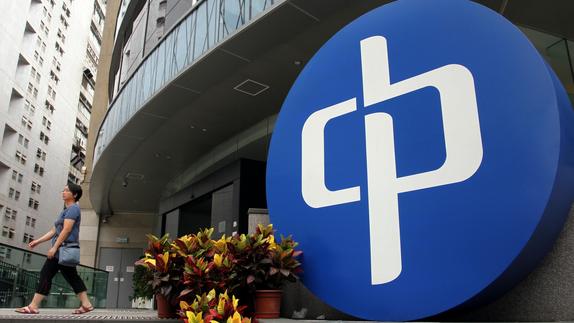 In this undated file photo, a citizen walks past the CLP Group's logo in Hong Kong. (PARKER ZHENG / CHINA DAILY)
In this undated file photo, a citizen walks past the CLP Group's logo in Hong Kong. (PARKER ZHENG / CHINA DAILY)
Hong Kong-listed utility provider CLP Holdings’ total earnings for the first half of 2021 fell due to one-off charges booked at its Australian and Chinese mainland business.
The opportunities we see in the Greater Bay Area go beyond power generation and include energy management, the electrification of transport, data centers, new energy infrastructure, and broader energy services.
Michael Kadoorie, CLP Holdings Chairman
The company reported that earnings tumbled 23.2 percent to HK$4.615 billion (US$594 million), after one-off charges were booked at its Australian business to settle longstanding litigation, and to make provision for the cost of ensuring safe operations in the Yallourn mine following the impact of recent extreme rainfall.
The Asian-focused utility provider declared a second interim dividend of HK$0.63 per share, the same as in 2020.
Consolidated revenue increased 5.2 percent to HK$40.73 billion with group operating earnings falling 7 percent to HK$5.7 billion mostly due to lower earnings from the Chinese mainland and Australia.
ALSO READ: CLP CEO: HK remains fascinating to businesses
“While the Hong Kong business remains robust, the outlook remains challenging in particular due to market conditions in Australia along with the continuing high coal prices impacting our operations in the mainland,” CLP Holdings Chairman Michael Kadoorie cautioned in a company statement.
The utility company is betting on the investment potential in the Guangdong-Hong Kong-Macao Greater Bay Area arising from a decarbonization initiative.
READ MORE: CLP high on the tech track with smart meters
“We are accelerating our exploration of opportunities both independently and in partnership,” Kadoorie said. “Yet, the opportunities we see in the Greater Bay Area go beyond power generation and include energy management, the electrification of transport, data centers, new energy infrastructure, and broader energy services. These new prospects will bring to bear the investments we have been making in recent years to enhance our technological capability and further develop our innovation potential.”


